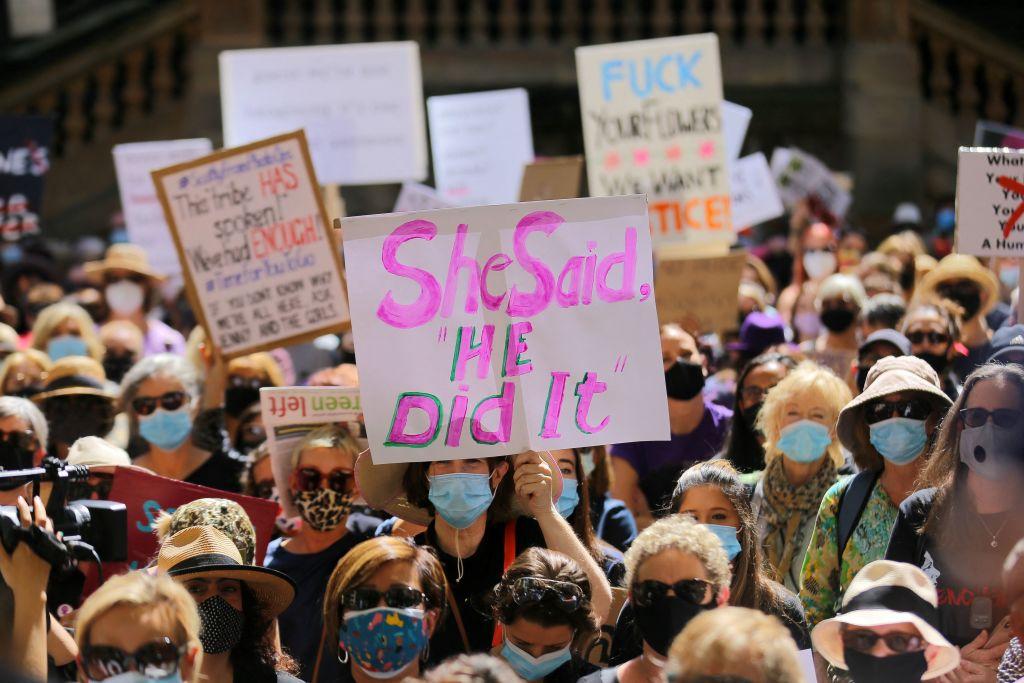Earlier this month, the lawns of Parliament House featured 2,500 empty shoes, one shoe for each of the men and boys who die in this country each year through suicide.
This powerful memorial event was sponsored by the Zero Suicide Community Awareness program which aims to educate the country about what needs to be done to reduce these shocking suicide numbers.
There were stirring speeches from politicians but the really moving moments in the two-day program featured families who had lost adult sons, talking about the shattering impact of that loss.
Some were angry—with good reason. Australia’s suicide prevention policies are failing.
We are falling behind the rest of the world when it comes to suicide prevention.
Between 2000 and 2019, global suicide declined by 11 percent. In Australia, rates increased by 31 percent.
The reason?
For many decades, our health authorities have blatantly refused to target the group most at risk—men. Seven of the nine people who suicide each day in Australia are male.
In 2019, the female suicide rate in Australia (5.6 per 100,000) was similar to the rest of the world (5.4 per 100,000). However male suicide rates in Australia (17.0 per 100,000) are now much higher than elsewhere (12.6 per 100,000).
If Australia’s male suicide rate could be reduced to that of the rest of the world, 10 men per week would be saved from an early death.
The fact is that most people involved in our key suicide funding bodies, both state and federal, simply aren’t interested in men at risk.
Just look at the $1.8 billion (US$1.2 billion) of funding allocated in the 2022 National Mental Health and Suicide Prevention Agreement.
- $735 million for adult mental health services that generally reach twice as many women as men.
- $300 million for youth mental health services, which generally reach twice as many young women as young men.
- $465 million for aftercare support for people who attempt suicide, a model with a track record of helping more women than men.
- $35 million for suicide postvention support providing suicide bereavement services that predominantly support women.
- $37 million for perinatal mental health services that generally support many more mums than dads.
Family and Relationships
Yet here too there is big news.There’s now solid proof that mental health problems are not the key risk factor for male suicide for one of our major groups of vulnerable men.
For the first time, this year the Australian Bureau of Statistics (ABS) published statistics based on coroners’ reports showing relationship/family breakdown is the major suicide trigger for family men—men in their peak child-raising years from 25-44.

“The top risk factor for males aged 25-44 years was problems in spousal relationships circumstances, present in over one-third of suicides. Problems in spousal relationships overtook mood disorders as the top risk factor in this age group for the first time and can include separation and divorce as well as arguments and domestic violence situations.”
Here you go. We’re talking family law issues—men under fire in our increasingly hostile family law system, facing the risk of losing their children, home and assets, and facing the stress of monstrous legal costs.
Plus “domestic violence situations” can often include false allegations.
Our current, failing suicide prevention policies are ignoring both the key target group and one of the key causes of suicide. No wonder we are doing badly.
Many are now determined this must change. Plans are under way for key bureaucrats to appear before Senate Estimates committees, to be grilled about their failed policies. And questions will be asked of relevant ministers in the house.
Plus, suicide prevention services must target men involved in the family law system.
Research is needed into the best ways to support vulnerable men, analysing trigger points that increase suicide risk—such as loss of access to children, false allegations, and prohibitive legal costs.

I remember long ago when health authorities first became aware of the suicide risk associated with post-partum depression in women. Resources poured in and any woman suffering dark times after the birth of a baby is now red flagged, with appropriate help readily on hand.
The same should happen when our health system discovers a man is depressed or stressed out by family law battles.
We should immediately be on alert that this is a man at risk of taking his life and appropriate help should be available.
We’re not talking about programs designed to teach men to show their feelings or learn to cry, but services staffed by people aware of the horrendous strain faced by men dealing with our biased family law system.
We also need many more men amongst decision-makers on government-funded suicide bodies—men prepared to speak up about the real issues driving men to take their lives.
This is an essential step towards reversing policy failures, given that we have seen decades of discrimination against men from predominantly female-controlled suicide bodies.
The Zero Suicide event attracted a great many people whose loved ones were represented in that sea of empty boots—a fitting memorial for International Men’s Day.
But as usual, our mainstream media just wasn’t interested.







